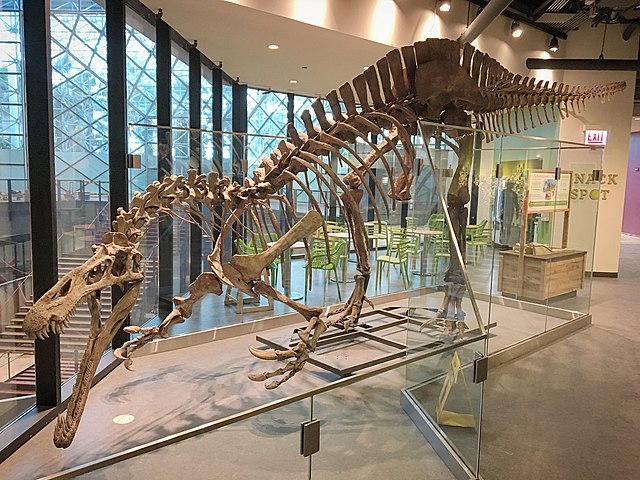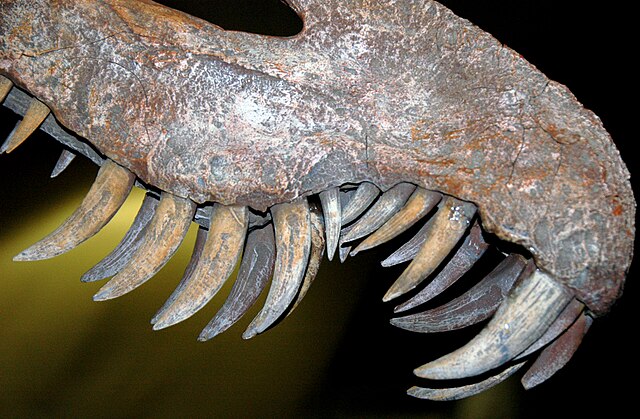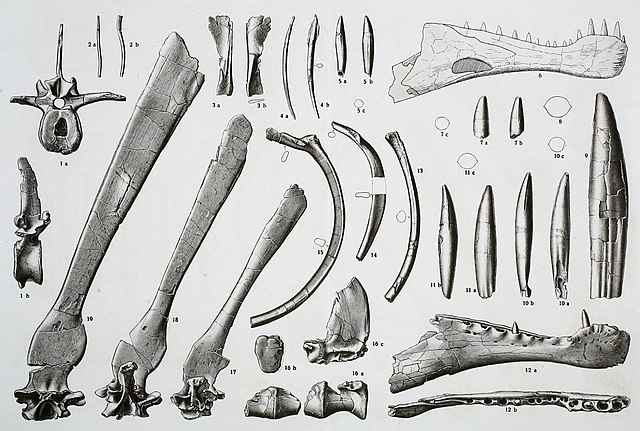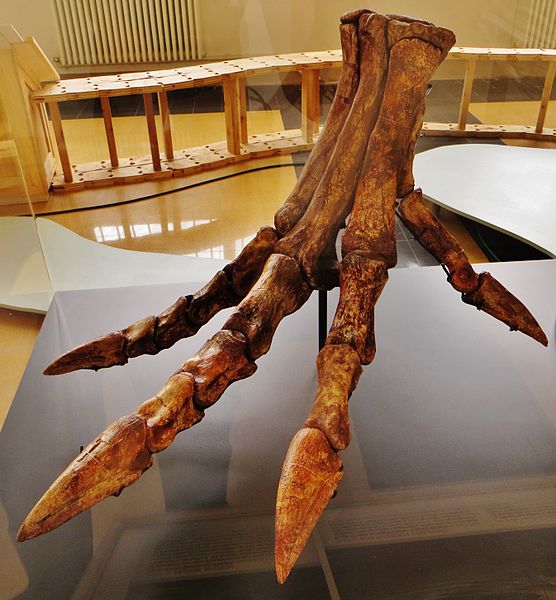Suchomimus is a genus of spinosaur dinosaur that lived between 125 and 112 million years ago in what is now Niger, north Africa, during the Aptian to early Albian stages of the Early Cretaceous period. It was named and described by paleontologist Paul Sereno and colleagues in 1998, based on a partial skeleton from the Elrhaz Formation. Suchomimus's long and shallow skull, similar to that of a crocodile, earns it its generic name, while the specific name Suchomimus tenerensis alludes to the locality of its first remains, the Ténéré Dese.
Suchomimus
Reconstructed skull, Museum of Ancient Life, Utah
Closeup of front of the snout and dentition
Life restoration
Spinosauridae is a clade or family of tetanuran theropod dinosaurs comprising ten to seventeen known genera. Spinosaurid fossils have been recovered worldwide, including Africa, Europe, South America and Asia. Their remains have generally been attributed to the Early to Mid Cretaceous.
Spinosauridae
Elements of the holotype specimen of Spinosaurus aegyptiacus, as illustrated by Ernst Stromer in 1915
Closeup of the teeth of Suchomimus
Reconstructed foot bones of Spinosaurus; note the straight claws and enlarged hallux (first toe) touching the ground







